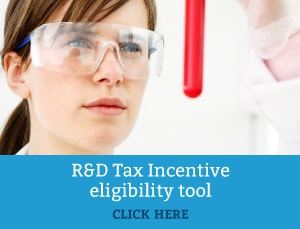ISA releases plan for Australia to thrive in global innovation race
January 30th, 2018As Australia celebrates 26 years of continuous economic growth, Innovation and Science Australia (ISA) releases their plan for Australia to further thrive in the global innovation race. ISA has released their report titled “Australia 2030: Prosperity through Innovation,” which provides a roadmap for governments to accelerate Australia’s innovation system by 2030. The report is a strategic plan to advise policy makers on how to accelerate innovation and optimise Australia’s innovation system.
In planning towards 2030, innovation will continue to be integral to the expansion of Australia’s economy, which will keep its workforce strong and address societal challenges. Some keys factors which will ensure Australia remains competitive in the global innovation race is scaling up more high-growth industries and companies, commercialising more high-value products and services, fostering great talent, and daring to tackle global challenges.
With respect to the research and development (R&D) sector, ISA’s plan is to maintain the excellence that has become its hallmark, while increasing the incentives for collaboration and commercialisation.
ISA has restated and clarified several recommendations made during the previous review of the R&D Tax Incentive programme in 2016, which the government has not yet responded to. Some key recommendations within the latest report include the following:
- Proposing to increase business R&D by better targeting the R&D Tax Incentive to SME entities which were found to be more reliant on the programme. Additionally also refocussing government support for business R&D from indirect measures (R&D Tax Incentive) to more direct measures (Grants).
- Clarifying the proposed operation of Cost Control Recommendations made during the review of the R&D tax incentives. The proposed cap on refundable offsets is proposed to operate whereby a cap of $4 million per year would apply and a maximum cumulative refund of $40 million per company should be applied. Additionally, the proposed intensity threshold for large companies would apply such that all R&D expenditure is claimable once a trigger level of 1% of a company’s total R&D expenditure is reached. Therefore, a company would need to have R&D expenditure equal to 1% of their total business expenditure to be able to claim.
- Proposing to increase Industry-research sector collaboration by introducing a collaboration premium in the R&D Tax Incentive as recommended in the original review of the programme.
- Increasing Export Market Development Grant funding which hopes to encourage the growth of exporting firms such as young high-growth firms.

The ISA board is confident that Australia can become a top-tier innovation nation by 2030 and retain its record-breaking streak with its 30 recommendations throughout the report.
Companies with a turnover of under $20 million can receive a tax offset of 43.5% for eligible expenditure (38.5% for companies with a turnover over $20 million). To find out more about Research and Development and whether your company could be eligible for the R&D tax incentive Contact Swanson Reed R&D Tax Advisors. Swanson Reed is Australia’s largest R&D Tax Advisory firm and specialise in only R&D claims.
Categories
- ATO Guidance and Materials
- AusIndustry Guidance and Materials
- Case Law
- Federal Budget 2021
- Federal Budget 2022
- For Accountants
- General Information
- Government Policy and Treasury
- Industry Specific Issues
- Interpretative Decisions
- Legislation and Parliamentary Matters
- R&D Tax Credit
- R&D Tax Funding Strategies
- R&D Tax Loans
- Recent News
- Tax Determinations
Archives
- April 2024
- March 2024
- February 2024
- January 2024
- December 2023
- November 2023
- October 2023
- September 2023
- August 2023
- July 2023
- June 2023
- May 2023
- April 2023
- March 2023
- February 2023
- January 2023
- December 2022
- November 2022
- October 2022
- September 2022
- August 2022
- July 2022
- June 2022
- May 2022
- April 2022
- March 2022
- February 2022
- January 2022
- December 2021
- November 2021
- October 2021
- September 2021
- August 2021
- July 2021
- June 2021
- May 2021
- April 2021
- March 2021
- February 2021
- January 2021
- December 2020
- November 2020
- October 2020
- September 2020
- August 2020
- July 2020
- June 2020
- May 2020
- April 2020
- March 2020
- February 2020
- January 2020
- December 2019
- November 2019
- October 2019
- September 2019
- August 2019
- July 2019
- June 2019
- May 2019
- April 2019
- March 2019
- February 2019
- January 2019
- December 2018
- November 2018
- September 2018
- July 2018
- June 2018
- May 2018
- April 2018
- March 2018
- February 2018
- January 2018
- December 2017
- November 2017
- September 2017
- August 2017
- July 2017
- June 2017
- May 2017
- April 2017
- March 2017
- February 2017
- January 2017
- December 2016
- November 2016
- October 2016
- September 2016
- August 2016
- July 2016
- June 2016
- May 2016
- April 2016
- March 2016
- February 2016
- January 2016
- December 2015
- November 2015
- October 2015
- September 2015
- August 2015
- July 2015
- June 2015
- May 2015
- April 2015
- March 2015
- February 2015
- January 2015
- November 2014
- October 2014
- September 2014
- August 2014
- July 2014
- June 2014
- May 2014
- April 2014
- March 2014
- February 2014
- January 2014
- December 2013
- November 2013
- October 2013
- September 2013
- May 2013
- April 2013
- March 2013
- September 2012
- August 2012
- June 2012


 Free Call: 1300 009 390
Free Call: 1300 009 390





 News & Research
News & Research



